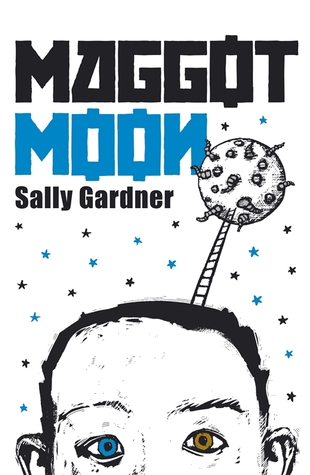The Lucy Variations is
Sara Zarr’s latest novel, due out March 2013. Lucy Beck-Moreau used to be a
child pianist prodigy; she did the circuit of competitions and concerts, and
was expected to continue performing throughout her adolescence. She comes from
a wealthy and talented family, and her grandfather, a lover of music and
performance, has the resources to ensure Lucy’s successful career. However,
after having a breakdown on stage during a performance, Lucy quit playing piano
and hasn’t been near one since. Her family, for the most part, tiptoes around
her, except for her grandfather whose disappointment is palpable.
Making her exit from a career in music even worse is the
fact that her younger brother Gus is on the same path that she veered from. After
Gus’s piano teacher dies unceremoniously in the Beck-Moreau living room, Lucy’s
grandfather interviews and hires a young man named Will to replace her. When
she watches the way Will teaches Gus, she believes that she might be able to
find a way back to playing the piano, even if it is only to play for herself.
However, it’s a long road to returning, as Lucy must deal
with the daily disappointment of her grandfather, the heavy sense of the way
she has let him down hanging over the house that they all live in together.
After quitting, Lucy had to return to school; she attends a high school with
her two best friends, although she consistently has trouble getting to school
on time. She is used to the flexible schedule her musical arts allowed her, and
still can’t get a handle on normal, everyday life.
Zarr has allowed for so many textual nuances in The Lucy Variations. She references
contemporary and classic music almost constantly, as a way of describing Lucy’s
taste and character. She also points towards the way that art can shape a
person as much as family, school, and society can. Zarr includes “Lucy’s Love
List” at the back of the book, a collection of the music discussed throughout
and the reason why each song has been included. It’s a fun extratextual move
from reading to listening, and I found that I did youtube many of the songs as
they were mentioned throughout the novel, and again when I found the list. For
a book about music, Zarr does emphasize the ability to find a way to listen to
Lucy’s story as well as to read it. Lucy’s interactions with her friends and
family are so carefully described, and the way that her performance, followed
by her leaving it behind, has affected her life is visible even in the way that
she interacts with the people around her. Thanksgiving is a particular
highlight of The Lucy Variations, not
just for the spread of food described, but also for the way that Lucy
experiences a normal holiday away from the pressures of both her mom and her
grandfather.
I read The Lucy
Variations around the same time that I was reading Love and Other Perishable Items, and I was struck by the
similarities between each, namely, the way their young female protagonists
crush on much older men. In Zarr’s novel, Lucy is enamored of both Gus’s piano
teacher and her own high school English teacher. Zarr emphasizes what it is,
exactly, that these two men hold for Lucy, and how her life performing for an
audience has shaped her concept of normalcy.
As well, The Lucy
Variations felt very similar to a Deb Caletti book. It had a good, strong
story that used beautiful and surprising writing to support a likeable
protagonist. Zarr’s books are so remarkably different from one another that
it’s difficult to compare The Lucy
Variations to any title that has come before. It is hard to believe that How to Save a Life preceded this title,
and Zarr’s ability to so completely step outside of one novel, set of
characters, story, form, and style in order engage with something different
surprises me every time I read one of her books.








